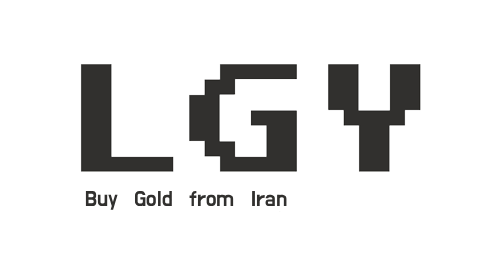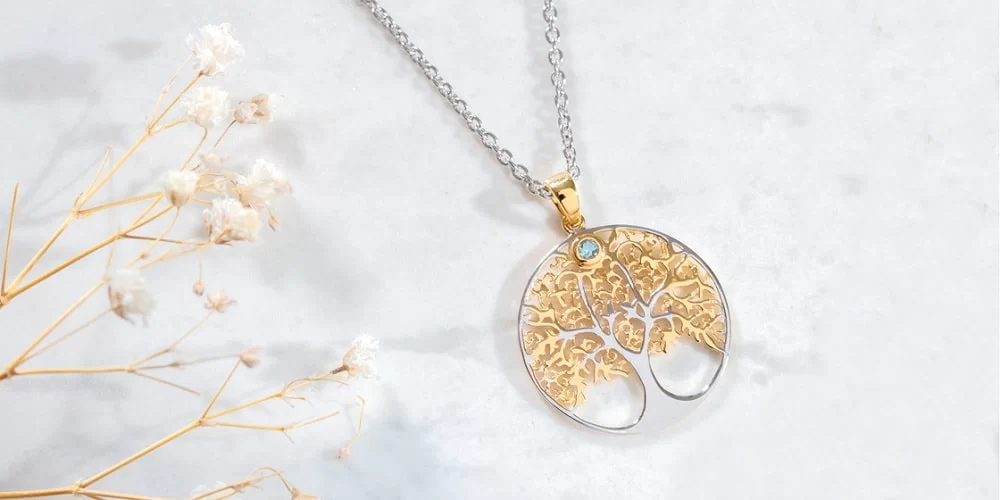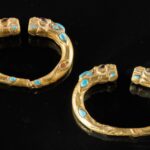
Iranian Traditional Jewelry Displayed in International Museums
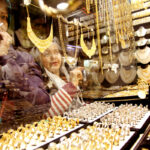
Analyzing the Market for Iranian Jewelry in Different Countries: Global Demand and Trends
Embracing Sustainable and Natural Materials in Jewelry Production
As the world becomes more aware of the environmental impact of various industries, consumers are increasingly seeking eco-friendly alternatives, even in fashion and jewelry. Iranian jewelry is well-positioned to meet this demand due to its sustainable practices and reliance on natural materials. Iranian artisans have long embraced techniques and materials that are both environmentally conscious and deeply rooted in traditional craftsmanship.
In this post, we’ll explore how Iranian jewelry is eco-friendly by focusing on the use of sustainable materials, traditional craftsmanship techniques, and ethical sourcing. We’ll also discuss why choosing Iranian jewelry can be a responsible and sustainable choice for consumers looking to reduce their environmental footprint.
1. Use of Natural and Locally Sourced Materials
One of the key factors that make Iranian jewelry eco-friendly is the use of natural materials, many of which are sourced locally. By relying on materials that are abundant and naturally occurring, Iranian artisans reduce the need for synthetic alternatives and limit their environmental impact.
Semi-precious stones from Local Sources
Iran is home to some of the world’s most famous mines for semi-precious stones, such as turquoise, agate, and lapis lazuli. These stones have been used for centuries in Persian jewelry and are valued not only for their beauty but also for their sustainable sourcing. For example:
- Neyshabur Turquoise: The turquoise from the Neyshabur mines in Iran is renowned for its high quality and vibrant color. This locally sourced stone is prized for its rarity and ethical extraction practices, as it is often mined using traditional methods that limit environmental damage.
- Agate and Lapis Lazuli: Both agate and lapis lazuli are naturally occurring stones that require minimal processing. These stones are often sourced from Iran and neighboring regions, reducing the carbon footprint associated with transportation.
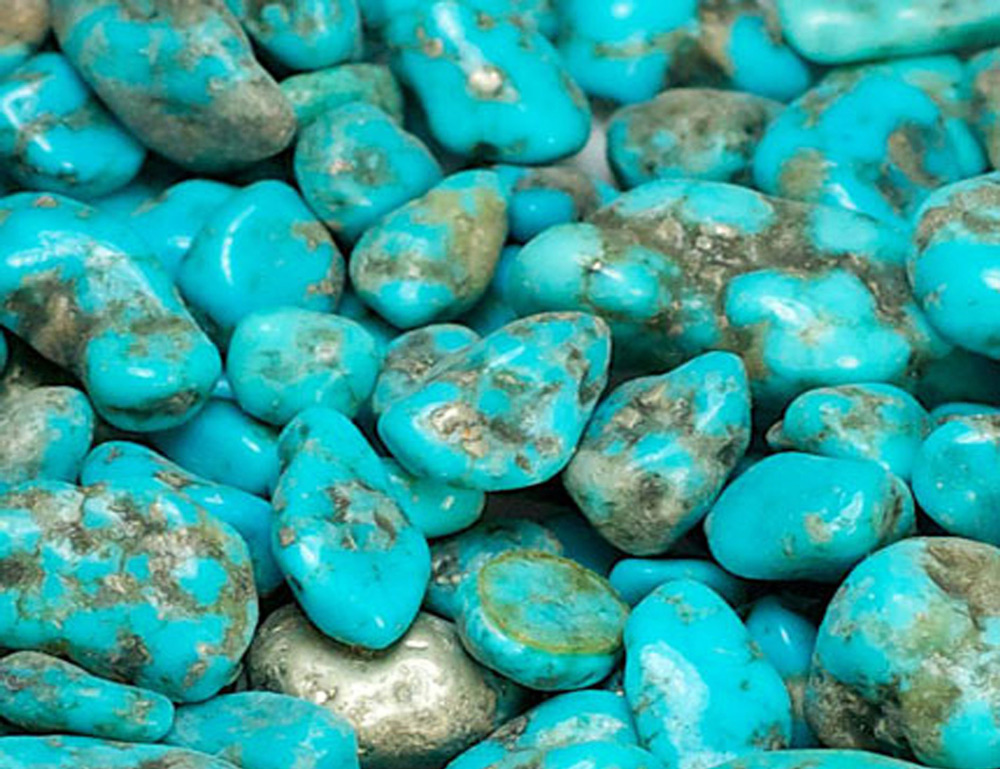
Turquoise (Firouzeh):
Why It’s Eco-Friendly
By using locally sourced, natural stones, Iranian jewelry reduces the need for synthetic gemstones and supports sustainable mining practices. This minimizes the environmental impact and supports local economies that depend on traditional mining techniques.
2. Handcrafted Jewelry: Reducing Industrial Impact
Another reason Iranian jewelry is considered eco-friendly is the emphasis on handcrafted techniques, which reduce reliance on large-scale industrial processes that often contribute to pollution and energy waste.
Artisan-Made Jewelry with Minimal Machinery
Iranian jewelry is typically made by skilled artisans using time-honored methods that rely on minimal machinery. Techniques like filigree, granulation, and lost-wax casting are performed by hand, ensuring that each piece is carefully crafted without the need for mass production or heavy industrial equipment.
- Traditional Craftsmanship: Many Iranian jewelers still use traditional tools, such as hammers, chisels, and simple kilns, to shape and refine their pieces. This low-tech approach significantly reduces the energy consumption associated with jewelry production.
- Small-Batch Production: Iranian jewelry is often made in small batches or as custom, one-of-a-kind pieces, which means that production is scaled down to meet individual demand, reducing excess waste and overproduction.
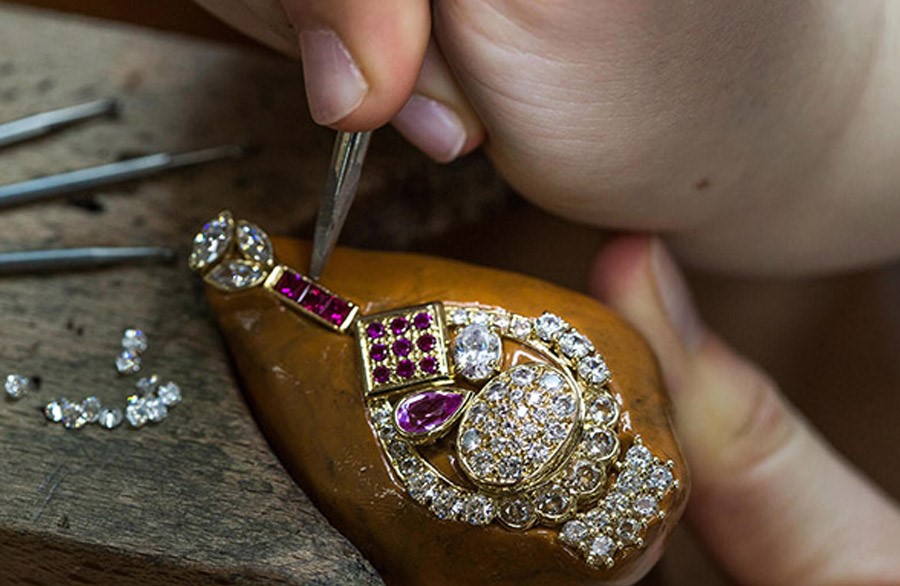
Traditional jewelry-making workshop
Why It’s Eco-Friendly
Handcrafting jewelry reduces the environmental impact associated with industrial manufacturing, such as high energy consumption, pollution, and waste. By opting for artisan-made Iranian jewelry, consumers support sustainable production methods that have a minimal carbon footprint.
3. Ethical and Responsible Sourcing of Materials
Iranian jewelry is also known for its ethically sourced materials, particularly when it comes to precious metals and gemstones. Iranian artisans prioritize responsible sourcing practices, ensuring that the materials used in their creations are obtained in ways that are environmentally and socially responsible.
Sustainable Mining Practices for Precious Stones
Many of the semi-precious stones used in Iranian jewelry come from small-scale, local mines that practice responsible mining techniques. These mines often operate with minimal environmental disruption and focus on ethical labor practices, ensuring fair treatment and wages for workers.
- Turquoise Mining in Neyshabur: The Neyshabur turquoise mines are renowned not only for the quality of their stones but also for their sustainable mining practices, which avoid the destructive techniques used in many large-scale mining operations.
- Lapis Lazuli and Agate: These stones are often mined in smaller quarries that prioritize environmental conservation, limiting the damage to the surrounding ecosystems and reducing the carbon footprint of the extraction process.
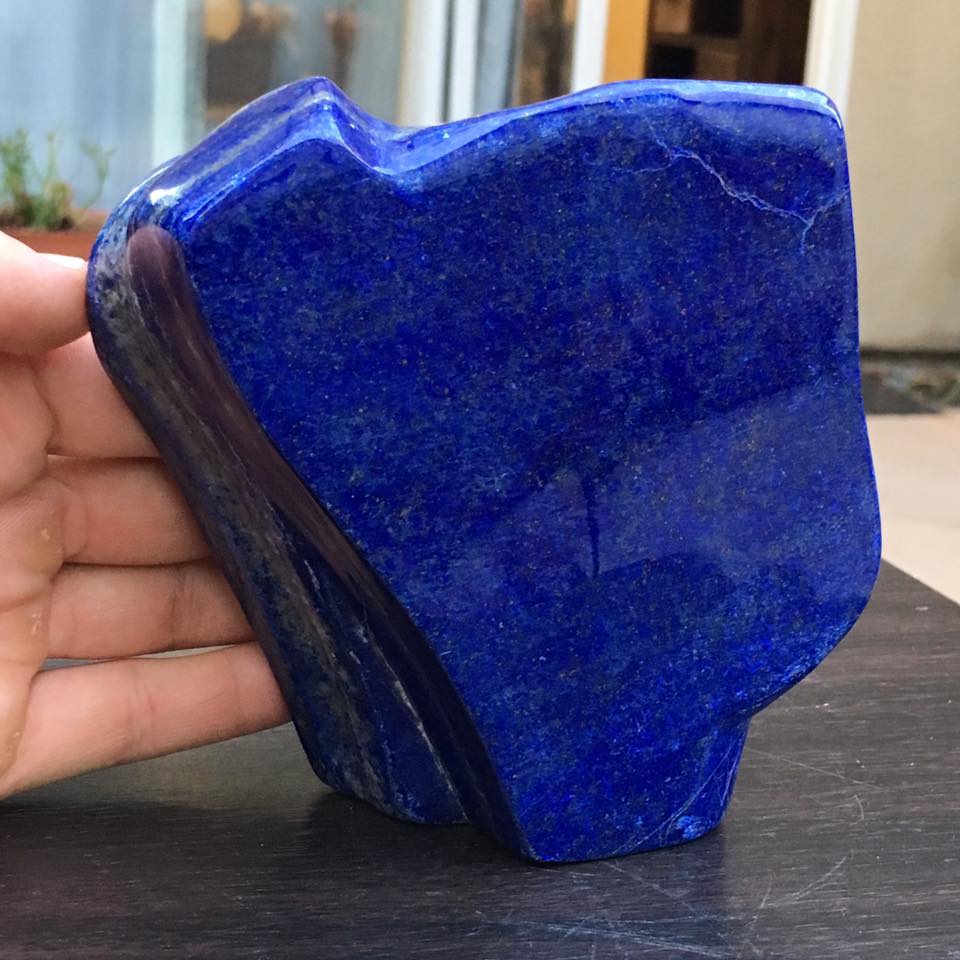
Lapis Lazuli
Why It’s Eco-Friendly
By focusing on ethically sourced materials, Iranian jewelry supports sustainable mining and ethical labor practices, ensuring that the production process respects both the environment and the people involved in extracting these precious resources.
4. Use of Recycled and Reusable Materials
In addition to sourcing new materials, many Iranian jewelers also incorporate recycled metals into their designs, further reducing their environmental impact. This practice aligns with the growing global movement toward sustainable fashion and responsible consumption.
Recycling Gold and Silver
Gold and silver are highly recyclable materials, and many Iranian artisans use recycled precious metals to create new pieces. This reduces the need for mining, which can be destructive to the environment, and supports the concept of a circular economy, where materials are continuously reused rather than discarded.
- Upcycling Vintage Jewelry: Some Iranian jewelers focus on upcycling older, damaged, or out-of-fashion jewelry by melting down the metals and reworking them into new designs. This not only preserves the value of the original materials but also gives them new life in a more sustainable way.
Why It’s Eco-Friendly
By using recycled metals, Iranian jewelers reduce the demand for mining, lower their carbon footprint, and promote sustainable practices in the jewelry industry.
5. Minimal Packaging and Waste Reduction
Another aspect of eco-friendly jewelry production in Iran is the use of minimal and eco-friendly packaging. Many artisan jewelers focus on reducing waste in both production and packaging, opting for biodegradable materials or recycled packaging to minimize environmental impact.
Eco-Friendly Packaging Options
Many Iranian jewelry sellers and artisans now use biodegradable or recycled materials for packaging their products. This includes recyclable boxes, fabric pouches, or paper wrapping that reduces waste and avoids the use of harmful plastics.
- Why It’s Eco-Friendly: Minimizing the use of non-recyclable packaging and opting for eco-friendly alternatives helps reduce the overall environmental footprint of the product, aligning with sustainable fashion practices.
6. Long-Lasting, Heirloom Quality Jewelry
One of the most sustainable choices a consumer can make is to invest in high-quality, durable products that are meant to last for generations. Iranian jewelry, known for its heirloom quality, fits this criteria perfectly. Many pieces are timeless in design and are passed down through generations, reducing the need for frequent replacement or the purchase of disposable, fast-fashion jewelry.
Durability and Craftsmanship
Handcrafted Iranian jewelry is built to last. The high-quality materials and skilled craftsmanship ensure that each piece can be worn for years, and even passed down as family heirlooms. This longevity contrasts with mass-produced fashion jewelry, which often has a short lifespan and contributes to the growing issue of fashion waste.
- Why It’s Eco-Friendly: Investing in long-lasting jewelry reduces the need for frequent purchases and lowers overall consumption, making it a more sustainable choice over time.
Conclusion: Why Iranian Jewelry is Eco-Friendly and Sustainable
Iranian jewelry offers a combination of eco-friendly practices, from the use of natural, locally sourced materials to handcrafted production methods that minimize environmental impact. By prioritizing sustainable sourcing, recycled materials, and responsible craftsmanship, Iranian artisans continue to create beautiful, high-quality pieces that are both culturally significant and environmentally conscious.
At LetsGoYelo, we are proud to offer handcrafted Iranian jewelry that reflects the best of traditional craftsmanship while embracing sustainable and eco-friendly practices. Explore our collection and invest in jewelry that supports a greener, more responsible future!
